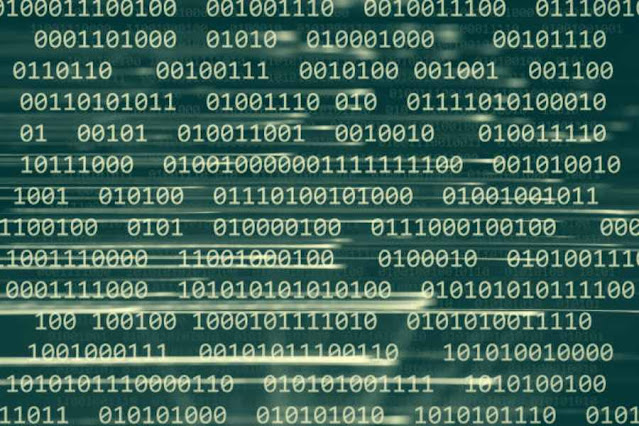The Significance of Random Number Generation

Random Number Generation: The Foundation of Cryptographic Security
Introduction
Random numbers play a fundamental role in various aspects of
computing and information security, from encryption key generation to secure
communications. Random Number Generation (RNG) is the process of generating
numbers that are unpredictable and statistically random. In this article, we
will delve into the importance of random number generation, its significance in
cryptography, methods of generating random numbers, and the challenges
associated with ensuring true randomness.
The Significance of Random Number Generation
Random numbers serve as the building blocks of security in
numerous applications, and their significance cannot be overstated:
Encryption: In encryption, truly random numbers are used to
generate cryptographic keys. The security of encrypted data depends on the
unpredictability of these keys.
Digital Signatures: Digital signatures rely on random
numbers for the generation of unique signatures, ensuring message integrity and
authenticity.
Secure Communication: Secure communication protocols use
random numbers to establish shared secrets between parties, preventing
eavesdropping and unauthorized access.
Password Generation: Strong, random passwords are essential
for protecting user accounts and systems. Random number generators are used to
create complex passwords.
Secure Transactions: Random numbers are crucial in secure
transactions, including online banking, e-commerce, and cryptocurrency. They
help prevent fraud and ensure the security of financial data.
Gaming and Gambling: In online gaming and gambling, random
number generation is essential to maintain fairness and unpredictability.
Methods of Random Number Generation
There are two primary categories of random number generation
methods: pseudo-random number generation (PRNG) and true random number
generation (TRNG).
Pseudo-Random Number Generation (PRNG)
PRNGs generate numbers that appear random but are actually
generated by a deterministic algorithm. They are also referred to as
deterministic random bit generators (DRBGs). PRNGs are widely used and suitable
for many applications, but they are not truly random and can be predictable if
the internal state is known.
Key characteristics of PRNGs include:
Seed Value: PRNGs require an initial seed value to start the
sequence of numbers. If the seed is known, the entire sequence becomes
predictable.
Periodicity: PRNGs have a finite period, after which the
sequence of numbers repeats. The length of the period depends on the algorithm
and the seed.
Deterministic: PRNGs produce the same sequence of numbers when given the same seed value.
Common PRNG algorithms include the Linear Congruential
Generator (LCG) and the Mersenne Twister.
True Random Number Generation (TRNG)
TRNGs generate numbers that are based on physical processes
or phenomena that are inherently random and unpredictable. TRNGs are considered
truly random, as they do not rely on algorithms or formulas. Instead, they
capture the inherent randomness of the physical world.
Key characteristics of TRNGs include:
Entropy Source: TRNGs rely on entropy sources, which are
physical processes or sources of randomness. Common entropy sources include
electronic noise, radioactive decay, and atmospheric noise.
Unpredictability: TRNGs produce numbers that are truly
unpredictable, making them suitable for cryptographic applications.
Non-Deterministic: TRNGs do not generate the same sequence
of numbers, even with the same initial conditions.
Challenges in True Random Number Generation
While TRNGs offer a higher level of randomness and security,
they are not without challenges:
Entropy Source Quality: The quality of the entropy source is
critical. If the source is biased or not truly random, the generated numbers
may exhibit patterns or predictability.
Speed: TRNGs can be slower than PRNGs, as they rely on
physical processes that may not produce random data quickly.
Environmental Factors: TRNGs can be affected by conservation
factors such as disease and electromagnetic interference, which can impact
their performance and randomness.
Testing and Certification: TRNGs require rigorous testing
and certification to ensure their true randomness and suitability for
cryptographic applications.
Applications of Random Number Generation
Random number generation is pervasive in various
applications across different domains:
Cryptography: Random numbers are at the core of
cryptographic security, used in encryption, digital signatures, and secure key
generation.
Secure Communications: Secure communication protocols, such
as SSL/TLS, use random numbers to establish secure connections between clients
and servers.
Secure Boot and Firmware: Random numbers are used in secure
boot processes to ensure the integrity of firmware and software updates.
Random Sampling: Random numbers are employed in statistical
analysis and random sampling techniques, ensuring unbiased data representation.
Monte Carlo Simulations: In scientific and engineering simulations, random figures are used in Monte Carlo replications to model probabilistic events and outcomes.
Gaming and Gambling: Random number generators are integral
to gaming, ensuring fairness and unpredictability in casino games, video games,
and lotteries.
Conclusion
Random number generation is a cornerstone of modern
computing and information security, underpinning encryption, secure
communications, and authentication mechanisms. While pseudo-random number
generators (PRNGs) serve many applications effectively, true random number
generators (TRNGs) are essential for cryptographic security, as they provide
truly unpredictable and random data. The challenges associated with TRNGs,
including entropy source quality and speed, require careful consideration and
testing to ensure their suitability for cryptographic applications. As digital
technologies continue to advance, the importance of robust and reliable random
number generation remains paramount in safeguarding data and privacy in the
digital age.


Comments
Post a Comment